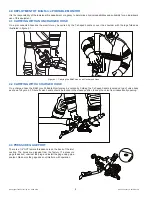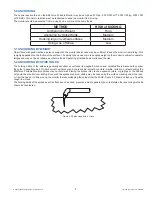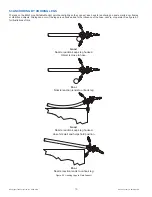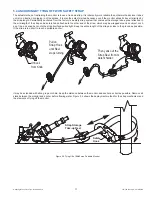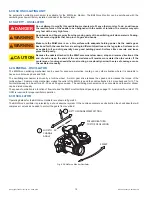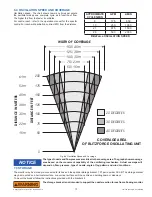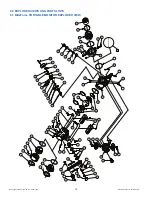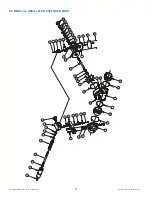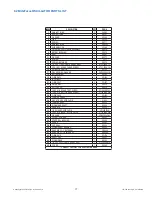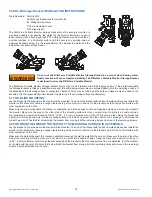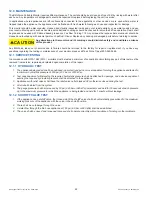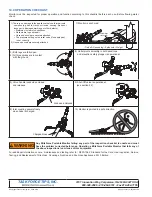
©Copyright Task Force Tips, Inc. 2006-2018
LIX-730 January 8, 2018 Rev08
22
12.0 MAINTENANCE
The BlitzForce Portable Monitor requires little maintenance. The unit should be kept clean and free of dirt by rinsing with water after
each use. Any inoperable or damage parts should be repaired or replaced before placing the unit in service.
In applications where appliances are left continuously connected to the apparatus or other devices or are used where water is
trapped inside the appliance, the appliance must be fl ushed with fresh water following each use and inspected for damage.
This monitor should be disconnected, cleaned and visually inspected inside and out at least quarterly, or as water quality and use
may require. Moving parts such as handles, valve ball and couplings should be checked for smooth and free operation. Seals shall
be greased as needed with Silicone based grease such as Dow Corning 112. Any scrapes that expose bare aluminum should be
cleaned and touched up with enamel paint such as Rust-Oleum. Replace any missing or damaged parts before returning to service.
CAUTION
Any alterations to the monitor and it’s markings could diminish safety and constitutes a misuse
of this product.
Any BlitzForce taken out of service due to failure should be returned to the factory for repair or replacement. If you have any
questions regarding the testing or maintenance of your monitor, please call Task Force Tips at 800-348-2686.
12.1 SERVICE TESTING
In accordance with NFPA 1962 (2013), monitors must be tested a minimum of annually. Monitors failing any part of this test must be
removed from service, repaired and retested upon completion of the repair.
12.1.1 HYDRAULIC TEST
1. The appliance being tested shall be positioned in a protective device or cover capable of holding the appliance and tested to
a minimum hydrostatic pressure of 300 psi (20.7 bar or 2070 kPa).
2. Test caps capable of withstanding the required hydrostatic pressure shall be attached to openings, and a device capable of
exerting the required hydrostatic pressure shall be attached to the appliance.
3. Appliances with relief valves shall have the relief valve outlet blanked o
ff
or otherwise closed during the test.
4. All air shall be bled from the system.
5. The gauge pressure shall be increased by 50 psi (3.45 bar or 345 kPa) increments and held for 30 seconds at each pressure
up to the maximum pressure for which the appliance is being tested and held for 1 minute without leakage.
12.1.2 SHUTOFF VALVE TEST
1. If the appliance has a shuto
ff
valve, the intake side of the shuto
ff
valve shall be hydrostatically pressurized to the maximum
working pressure of the appliance with the valve in the shuto
ff
position.
2. There shall be no leakage through the valve.
3. A
water
fl
ow through the
fi
re hose appliance at 100 psi (6.9 bar or 690 kPa) shall be established.
4. The valve shall be closed and reopened twice and shall operate smoothly without evidence of binding or other problems.

